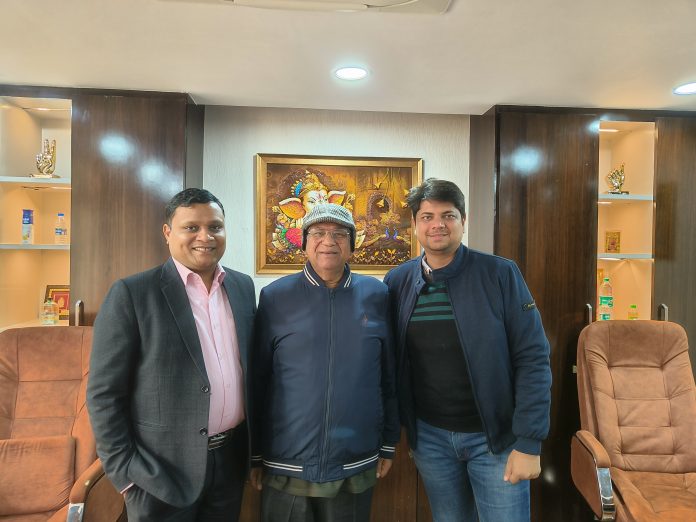Prakash Shrink Pack India, a leading manufacturer, supplier, and exporter of multi-colored shrink labels, BOPP wrap-around labels, PVC shrink film sleeves, and pouches, recently shifted a Pelican press from its plant in outer Delhi’s Narela to the third new plant in Kundli in Sonipat, which became operational in 2023 itself. This is Prakash Shrink Pack’s second press from the Rajkot-based manufacturer after a Pelican Solomark 6450 gravure press, which was installed earlier in 2023.
After the relocation, the company’s Sonipat unit boasts upscaled production from 2,400 metric tons to 4,000 metric tons. Its products are applicable in the automobile, pharmaceutical, electrical, and food industries and available at affordable rates. It carries out the entire manufacturing process – from procuring raw materials, manufacturing, and delivering the products to its clients with state-of-the-art machinery from India and Taiwan for all stages of production, including printing machines, slitting machines, inspection machines, and more.
Vishal Bansal, managing director, told Packaging South Asia that 2023 has been somewhat slow in terms of sales despite added capacity and enhanced production. However, the company has a good forecast for 2024 with increased orders in both the domestic and foreign markets from bigger players in the multi-colored shrink labels, BOPP wrap-around labels, PVC shrink film sleeves, and pouch segments.
According to Bansal, sustainability is still a long road for the Indian packaging Industry. He said, “It took about 30 years for plastic to become a primary material for packaging and several other industries. The Indian packaging industry, although in R&D to find an alternative, will have to wait for another 30 years, according to my assumption. Finding an alternative to multi-layered plastic is only one step of the solution. Making sure that the alternative is a viable solution with the same barrier properties, finding if it is sustainable or recyclable, creating awareness about it, mass producing it and finally adopting it will be a herculean task.”
The growth in awareness among end-consumers has helped waste collection, segregation, and recycling — making it easier to procure recycled material. “Recycling of packaging material has been going on for a very long time, but now it is more visible to converters and end-users since the advent of the EPR regulations. Recycling and sustainable practices came to the limelight with a more focused approach. Plastic is but a bi-product of crude oil extraction, so decreasing its production gradually will be for the best,” he says.
The lack of skilled operators for printing and converting lines is also a huge problem for the Indian manufacturing industry and solving it should be a priority for manufacturers if they want to boost production and sales. Underlying issues include machines not running at full capacity and irregular maintenance. “To rectify these issues, we plan to initiate training programs for every level of operation. It’s the only way a converter can minimize waste and achieve desired production.”
Varun Gupta, managing director of the company, said Prakash Shrink Pack has seen a 10-15% year-on-year growth. “Primarily, we are providers of shrink labels and wrap-around labels for the beverage packaging segment. We are constantly growing our reach in FMCG. In my opinion, 2024 will be a better year for us to work with additional players in the industry. However, with Covid seemingly coming back, the industry needs to tread more carefully and ensure it meets all government norms,” Gupta said.
The Western markets enjoy better trade due to the presence of seaports. “Maharashtra and Gujarat have an advantage due to the sea route. Moreover, Gujarat has a single window service for all certifications and clearances. The northern markets do not have those privileges. While the sea route is impossible for our region, we could avail of benefits such as a single-window service and probably grow faster,” Bansal concludes.










